Ditapis dengan
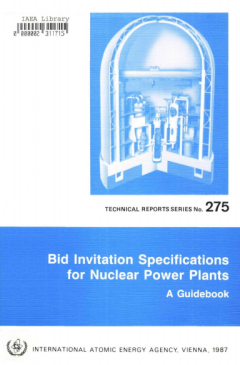
BID INVITATION SPECIFICATIONS FOR NUCLEAR POWER PLANTS, A GUIDEBOOK (e-book)
This Guidebook constitutes a complement to a series of technical guidebooks: Technical Evaluation of Bids for Nuclear Power Plants, Technical Reports Series No. 204 (1981); Guidebook on the Introduction of Nuclear Power, Technical Reports Series No. 217 (1982); and Economic Evaluation of Bids for Nuclear Power Plants, 1999 Edition, Technical Reports Series No. 369 (2000). These provide, in part…
- Edisi
- -
- ISBN/ISSN
- 9201551878
- Deskripsi Fisik
- 186 p.
- Judul Seri
- Technical Reports Series No. 275
- No. Panggil
- -
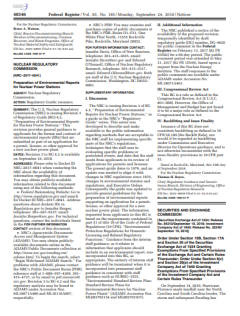
Preparation of Environmental Reports for Nuclear Power Stations
The U.S. Nuclear Regulatory Commission (NRC) is issuing Revision 3 of Regulatory Guide (RG) 4.2, “Preparation of Environmental Reports for Nuclear Power Stations.” This revision provides general guidance to applicants for the format and content of environmental reports (ERs) that are submitted as part of an application for a permit, license, or other approval for a new nuclear power plant.
- Edisi
- -
- ISBN/ISSN
- -
- Deskripsi Fisik
- -
- Judul Seri
- NUREG-0099 Regulatory Guide 4.2 Revision 2
- No. Panggil
- 539.7 NUR p
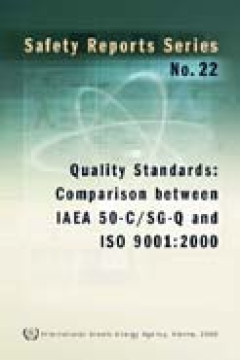
COMPARISON BETWEEN IAEA 50-C/SG-Q AND ISO 9001-2000, QUALITY STANDARDS (e-book)
This Safety Report compares the requirements of IAEA Safety Series No. 50-C/SG-Q, Quality Assurance for Safety in Nuclear Power Plants and other Nuclear Installations (1996), with the ISO 9001:2000 standard issued by the International Organization for Standardization. It identifies the main differences between the ISO quality standards and the additional requirements and guidance contained with…
- Edisi
- -
- ISBN/ISSN
- 9201111029 / 10206450; no. 22
- Deskripsi Fisik
- 57 p. : Illus. ; 29 cm
- Judul Seri
- Safety Reports Series No. 22
- No. Panggil
- -
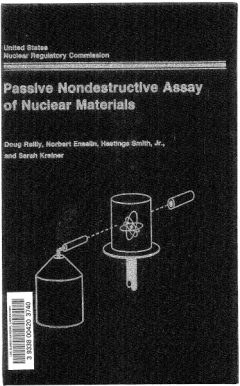
Passive Nondestructive Assay of Nuclear Materials
The term nondestructive assay (NDA) is applied to a series of measurement techniques for nuclear fuel materials. The techniques measure radiation induced or emitted spontaneously from the nuclear material; the measurements are nondestructive in that they do not alter the physical or chemical state of the nuclear material. NDA techniques are characterized as passive or active depending on whethe…
- Edisi
- -
- ISBN/ISSN
- -
- Deskripsi Fisik
- 700 p. : illus. ; 23,5 cm
- Judul Seri
- -
- No. Panggil
- -
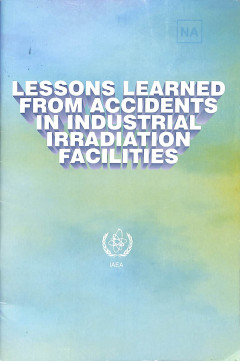
Lessons Learned from Accidents in Industrial Irradiation Facilities
This book consist : Introduction; Brief description of accidents; Major causes of accidents and lessons learned; and Prevention and remedial actions. (Jml)
- Edisi
- -
- ISBN/ISSN
- 920102696X
- Deskripsi Fisik
- 52 p. : Illus. ; 24 cm
- Judul Seri
- -
- No. Panggil
- 621.48 IAE l
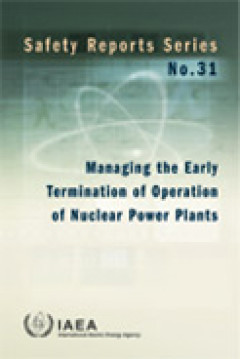
Managing the Early Termination of Operation of Nuclear Power Plants
When facing the decision of closing nuclear power plants (NPPs) before expiration of their operating licences, it is important that the same safety measures are applied to management concerns for strategic planning as are applied to technical reviews. These management and organizational issues are fundamental to any future decommissioning process. Managers at sites that decide to close early ma…
- Edisi
- -
- ISBN/ISSN
- 9201086032 / 10206450
- Deskripsi Fisik
- 48 p. : Illus. ; 24 cm
- Judul Seri
- Safety Reports Series No. 31
- No. Panggil
- -
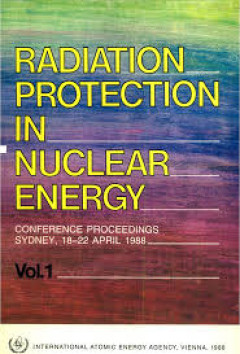
Radiation Protection in Nuclear Energy, Vol. 2, Conference Proceedings Sidney…
Proceedings of a conference, Sydney, Australia, 18–22 April 1988. The purpose of the conference was to exchange views on the principles of radiation protection, to highlight issues of current importance, to examine the problems encountered in applying the principles of radiation protection and, where possible, to identify generic solutions. The important topics covered were the interface betw…
- Edisi
- -
- ISBN/ISSN
- 9200204880 / 00741884
- Deskripsi Fisik
- 522 p. : Illus. ; 24 cm
- Judul Seri
- -
- No. Panggil
- 363.1799 IAE r

Methodology for the Management of Ageing of Nuclear Power Plant Components Im…
This technical report, one of a series on the management of ageing nuclear power plants, presents methodologies for selecting plant components important to safety whose ageing should be assessed and for performing ageing management studies. Although the report has been developed for the management of ageing of plant components important to safety, the methodology studies are applicable to compo…
- Edisi
- -
- ISBN/ISSN
- -
- Deskripsi Fisik
- -
- Judul Seri
- Technical Reports Series No. 338
- No. Panggil
- -
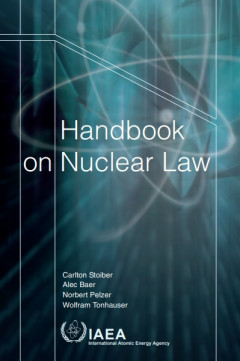
Handbook of Nuclear Law
Membahas tentang Nuclear energy-law and legislation-Handbooks, manual, etc. 2. Radiation-safety measures-Handbooks, manual, etc. 3. Nuclear reactors-safety measures-Handbooks, manuals, etc. 4. Liability for nuclear damages-Handbooks, manual, etc. 5. Nuclear nonproliferation-Handbooks, manuals, etc. (Jml)
- Edisi
- -
- ISBN/ISSN
- 9201057032
- Deskripsi Fisik
- xviii, 168 p. : illus. ; 24 cm
- Judul Seri
- -
- No. Panggil
- 621.4803 SHO h
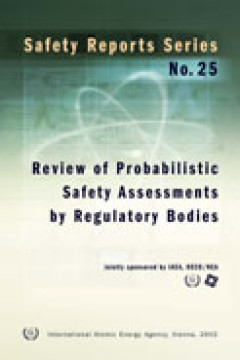
REVIEW OF PROBABILISTIC SAFETY ASSESSMENTS BY REGULATORY BODIES (e-book)
This report provides detailed guidance on how to review probabilistic safety assessments (PSAs) for nuclear power plants with the purpose of providing a basis for taking risk informed decisions within a regulatory decision making process. It gives a detailed account of the field and also addresses the relevant technical issues.
- Edisi
- -
- ISBN/ISSN
- 9201175027/10206450 ; no. 25
- Deskripsi Fisik
- 153 p. : Illus. ; 29 cm
- Judul Seri
- Safety Reports Series No. 25
- No. Panggil
- -
 Karya Umum
Karya Umum  Filsafat
Filsafat  Agama
Agama  Ilmu-ilmu Sosial
Ilmu-ilmu Sosial  Bahasa
Bahasa  Ilmu-ilmu Murni
Ilmu-ilmu Murni  Ilmu-ilmu Terapan
Ilmu-ilmu Terapan  Kesenian, Hiburan, dan Olahraga
Kesenian, Hiburan, dan Olahraga  Kesusastraan
Kesusastraan  Geografi dan Sejarah
Geografi dan Sejarah